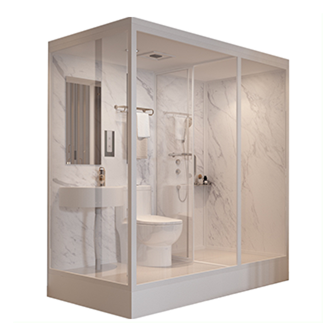Dec . 03, 2024 14:30 Back to list
Understanding the Process of Tempered Glass Manufacturing and Its Applications
The Tempered Glass Process An Overview
Tempered glass, a product known for its strength and safety, is manufactured through a specific process that enhances its durability. This glass is used in a variety of applications, including windows, shower doors, glass doors, and even furniture. Understanding the tempered glass process not only highlights the science behind its robustness but also its applications and benefits.
The tempered glass manufacturing process begins with the selection of raw glass, typically in the form of sheets. These sheets are cut to the desired size and shape, depending on their intended use. The first critical step in the process is the heating phase. The glass sheets are heated to temperatures of about 1,200 to 1,300 degrees Fahrenheit (approximately 600 to 700 degrees Celsius) in a controlled environment, such as a tempering furnace. This heating process alters the internal structure of the glass, allowing it to be more resistant to changes in temperature and to withstand impact.
After the heating phase, the glass undergoes rapid cooling, known as quenching. The glass is suddenly exposed to cool air, which drastically lowers its temperature. This cooling process is crucial because it creates a strong compressive stress on the surface of the glass while allowing the interior to remain in a state of tension. As a result, tempered glass is much stronger than standard glass, making it less likely to break under stress. In fact, tempered glass is approximately five to six times stronger than untreated glass of the same thickness.
One of the significant advantages of tempered glass is its safety characteristics. When tempered glass does break, it shatters into small, blunt pieces rather than sharp shards, significantly reducing the risk of injury. This quality makes tempered glass an essential choice for environments where safety is paramount, such as in commercial buildings, car windows, and shower stalls.
tempered glass process

The tempered glass process also allows for customization. During the manufacturing stage, various treatments can be applied, such as tinting, coating, or even texturing, to achieve different aesthetic and functional characteristics. For instance, tinted tempered glass can provide privacy and reduce glare from sunlight, making it ideal for residential and commercial applications alike.
Moreover, tempered glass is suitable for use in environments exposed to extreme temperatures. It can withstand thermal stress, which makes it a popular choice for fireplaces and oven doors. Its ability to tolerate rapid changes in temperature without breaking further enhances its reputation as a reliable construction material.
In addition to its performance and safety features, tempered glass is also eco-friendly. The manufacturing process requires less energy compared to the production of laminated glass. Additionally, glass is 100% recyclable, and post-consumer glass can be reused in the production of new glass products, reducing waste and conserving resources.
However, despite its many benefits, tempered glass is not invincible. It can still break under certain conditions, such as direct impact from a heavy object or thermal shock if exposed to sudden temperature changes. This reality highlights the importance of careful handling and installation to maximize its efficiency and safety.
In conclusion, the tempered glass process transforms ordinary glass into a robust, flexible, and safe material ready for various applications. Its strength, safety features, and versatility make it an ideal choice for a range of industries, from architecture to automotive. As technology advances, the tempered glass process continues to evolve, promising even greater innovations in the field of glass manufacturing. Understanding this process not only underscores the significance of tempered glass in modern construction but also highlights the intricate balance between science and art in creating materials that enhance our environment.
-
Safety and Style with Premium Laminated Glass Solutions
NewsJun.24,2025
-
Reinvents Security with Premium Wired Glass
NewsJun.24,2025
-
Premium Float Glass Line for Modern Architecture
NewsJun.24,2025
-
Low Emissivity Glass for Energy-Efficient Architecture
NewsJun.24,2025
-
High-Performance Insulated Glass Solutions for Modern Architecture
NewsJun.24,2025
-
Elevates Interior Style with Premium Silver Mirror
NewsJun.24,2025
Related PRODUCTS














